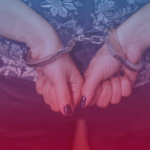
Victims are swayed by the false prospect of endless opportunities in the EU. Source: Laszlo Balogh/Reuters Photo
Written by Nathaly de Camargo Franzoni
The International Labour Organization reports that organised crime groups (OCGs) in Europe amass approximately $50 billion annually (€45 billion) on the backs of a purported 20,532 victims of trafficking in human beings (THB). (1) Of this, 44% are EU nationals, predominantly from Bulgaria, Romania, Poland and Czechia. The remaining 56% from outside the EU include Nigerians, Brazilians, Albanians and citizens from a number of Southeast Asian countries. Destinations vary depending on profitability, from the Netherlands to Romania. (3)
Paving the way for international legislation on THB, Article (3) of the Palermo Protocol defines THB as “the recruitment, transportation, transfer, harbouring or receipt of persons” using deceptive means, for the purpose of exploiting trafficked persons. (2) Consequently, the EU has set a supranational commitment to curtailing the human trafficking epidemic on the continent with two vital policy instruments building on the UN framework. The Anti-Trafficking Directive 2011/36/EU and the Strategy towards the Eradication of Trafficking in Human Beings (2012-2016) require Member States to transpose the 2011 Directive into national legislation to prevent trafficking, prosecute criminals and protect victims.
According to the European law enforcement agency’s 2016 Situation Report on Trafficking in Human Beings in the EU, the profitability of the industry is undoubtedly owed to the existing market preying on the vulnerable and commodifying the individual to provide inhumane and underpaid work. In fact, as long as economic inequalities, discrimination and financial crises exist, so will the desire to seek an escape at the price of security and legality. By presenting a false reality of wealth and comfort in highly developed EU countries, OCGs are able to recruit the most desperate elements of society, abusing their fundamental right to freedom at the cost of their mental and physical wellbeing. (3)
As for the types of THB, Europol puts sexual exploitation at the top with 90%, according to data from the period 2013-2014. Unsurprisingly, labour exploitation concerns only 5.6% of estimates while the remaining 4.1% are sham marriages, trafficked underage victims, and forced criminality.
Of all registered victims, two-thirds are females who were sexually exploited; children regrettably make up nearly one quarter of registered trafficking victims and are either sexually exploited or go into forced criminality. In the labour exploitation sector, which includes work in the agriculture sector, the construction industry or even the catering business, 80% of registered victims are males from Central and Eastern Europe as well as Southeast Asia, Morocco and Turkey. (4)
Regardless of the type of exploitation, victims will go on to endure abuse to maintain their obedience, Europol reports.
While sexual exploitation victims are often digitally surveilled and denied access to the telephone, labour exploitation victims are verbally abused and incur debt with their traffickers. The aim is, of course, to gain the victim’s silence and raise their dependence on the organisation, thus prolonging the period of slavery and the traffickers’ profiteering. Psychological abuse may come in the form of a deportation threat or supposed attacks on the victim’s family. It is also not uncommon for a trafficking cell to regularly relocate, at the cost of the trafficked person’s health, for the sake of evading suspicions from authorities. Forced criminality victims, on the other hand, can expect to be arrested for pickpocketing, shoplifting, drug trafficking and committing burglaries. With no escape from the network, criminal activities will continue. Nonetheless, what unites victims of THB is how OCGs take advantage of their lack of knowledge of European employment laws and workers’ rights, or of the fact they never realise they are in fact victims of human trafficking.
Although on the legal front the EU has stepped forward in setting a directive for Modern Slavery (MS), the lack of legislative harmonisation makes the effective use of the law difficult. European law enforcement agencies have noticed that in countries where prostitution is legal, for instance the Netherlands, organised crime groups have a framework to freely operate with minimal legal consequences. Or in the case of successful asylum seekers (when traffickers force victims to apply for the sake of documentation), moving to more permissive states is simplified. The Schengen Agreement is also easily abused, with human traffickers finding lucrative markets across the EU without border checks.
The greater barrier, however, comes from the OCGs themselves, Europol notes. Taking advantage of ethno-linguistic similarities with the victims, traffickers work in extremely efficient groups. For instance, investigations have shown that European groups are characterised by their professionalism and hierarchical structures, with small mobile groups controlling a handful of victims. Recruitment takes place using fake employment agencies, or in the case of sexual exploitation, using the ‘lover boy’ method and other false promises. Since victims hold European passports, crossing borders undetected is simple.
In comparison, Nigerian gangs are considerably more sophisticated than their European counterparts, working exclusively with sexual exploitation. These OCGs operate in cells and recruit victims using false promises of love and rewarding jobs. Continuously renewing their ranks, these OCGs use a victim’s feeling of indebtment to turn them into an organiser. Using look-alike documents, victims and traffickers can freely travel, escaping European authorities.
Meanwhile, Roma criminal networks are not only mobile but exclusively patriarchal. Victims are practically given to the organisation by family members (themselves involved with the business) and will be expected to engage in forced criminality. Roma victims escape identification by frequently moving around and using forged documents.
That being said, a common feature in the modus operandi of these OCGs involves using shell companies as a front for their illicit activities, thus concealing themselves from the authorities. TBH networks are also involved in money laundering, frequently wiring money back to their country of origin as business transactions between fake companies or using a victim’s bank account.

![]() In an effort to eradicate human trafficking on the continent, the EU set up the Serious and Organised Crime Policy Cycle in 2013, aiming for MS law enforcement agencies and the European law enforcement agency to tackle international and organised crime. As a result, Europol shares information and expertise with all MS crime agencies. However, with current data revealing only 2014-2016 results on the registered victims of trafficking, analysing the effectiveness of the latest EU Strategy is extremely difficult, especially in cases where MS law enforcement agencies refuse to share their latest statistics and take advantage of Europol’s intelligence facilities. Besides this, agencies have made recommendations in order to increase their productivity in tackling organised crime.
In an effort to eradicate human trafficking on the continent, the EU set up the Serious and Organised Crime Policy Cycle in 2013, aiming for MS law enforcement agencies and the European law enforcement agency to tackle international and organised crime. As a result, Europol shares information and expertise with all MS crime agencies. However, with current data revealing only 2014-2016 results on the registered victims of trafficking, analysing the effectiveness of the latest EU Strategy is extremely difficult, especially in cases where MS law enforcement agencies refuse to share their latest statistics and take advantage of Europol’s intelligence facilities. Besides this, agencies have made recommendations in order to increase their productivity in tackling organised crime.
In their Report, Europol suggested increasing online policing to crush OCGs at their recruitment stage or even to monitor potential victims’ activities. With all MS’ agreeing to these requests, it is possible that THB networks will steadily decline, but only a fresh set of data would reveal the reality. (3)
To fully address the trafficking in human beings, the EU’s greatest challenge is to open up funds for law enforcement agencies and awareness campaigns on the issue. On the global front, THB will continue being a lucrative industry where human lives are fetishized commodities, as long as economic crises and inequalities proliferate.
References
International Labour Organization 2014, ILO says forced labour generates annual profits of US$ 150 billion, <https://www.ilo.org/global/about-the-ilo/newsroom/news/WCMS_243201/lang–en/index.htm>.
Protocol to Prevent, Suppress and Punish Trafficking in Persons Especially Women and Children, supplementing the United Nations Convention against Transnational Organized Crime, New York, 15 November 2000, United Nations Treaty Series, vol. 2237, p. 319; Doc. A/55/383. p. 43, available from https://treaties.un.org/Pages/ViewDetails.aspx?src=TREATY&mtdsg_no=XVIII-12-a&chapter=18&clang=_en.
Situation Report Trafficking in Human Beings in the EU. The Hague, 2016. No: 765175. thb_situational_report_-_europol.
Study: Data collection on trafficking in human beings in the EU, 2018.

 Domestic abuse in England & Wales: a historical legal gap bridged by Section 76 of the Serious Crime Act 2015?
Domestic abuse in England & Wales: a historical legal gap bridged by Section 76 of the Serious Crime Act 2015?  Looking back at Burden and Burden v. the UK: Are siblings being legally overlooked?
Looking back at Burden and Burden v. the UK: Are siblings being legally overlooked?  The European Housing Crisis from the Human Rights Perspective
The European Housing Crisis from the Human Rights Perspective  Female Suicide Bombers As A Security Threat: Towards A More Comprehensive And Inclusive Approach
Female Suicide Bombers As A Security Threat: Towards A More Comprehensive And Inclusive Approach 


